EUROPE: Austrian Federal Railways has put into service the first of its updated Railjet trainsets on services linking Germany, Austria and Italy. Toma Bačić rode on a preview run between München and Verona on April 5.
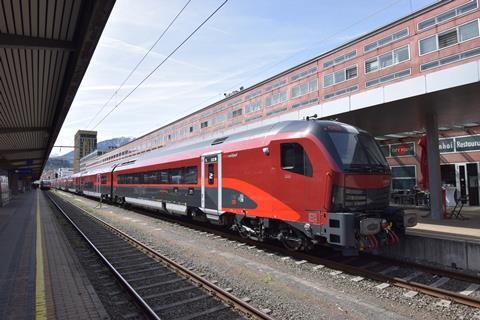
EUROPE: Austrian Federal Railways has put its second-generation Railjet push-pull trainsets into traffic on international services between Germany and Italy.
An inaugural run took place on April 5 between München Hbf and Verona Porta Nuova via the Brenner corridor carrying guests and ÖBB officials, before squadron service began on April 8. However, even these were not the first chance Austrians had had to sample the updated design: the national operator had put some of the newly commissioned trainsets into service domestically in late March, running between Wien and Feldkirch as crowd-busters for Easter holiday traffic.
A growing fleet
On the Brenner route, the Railjet New Generation sets are primarily intended to replace older loco-hauled stock. ÖBB ordered an initial batch of eight of the push-pull trainsets in 2018, of which four have now been delivered and the remainder are expected to be commissioned for service by the December timetable change. These will all be deployed on the München – Verona service.
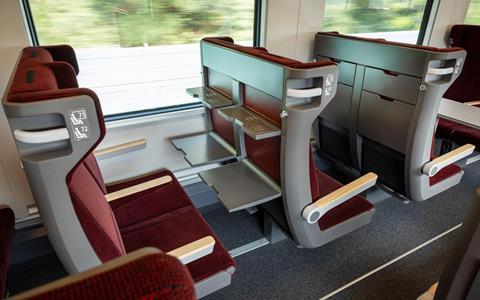
As with the original generation of Railjet cars supplied by Siemens, the trains are powered by ÖBB’s large fleet of Taurus multi-system electric locos, also supplied by Siemens. On March 22, ÖBB confirmed the order of 19 more Railjet NG trainsets for delivery by late 2028.
Low-floor access
The new arrivals are the latest product of a fruitful relationship between Siemens and ÖBB that dates back to a €245m order for an initial 23 Railjet sets in February 2006.
However, the current iteration of the design reflects a number of key trends that have shaped the rolling stock market since the first Railjet carried passengers in 2008. accessibility requirements and ease of certification are now both fundamental issues for operators and suppliers to address.
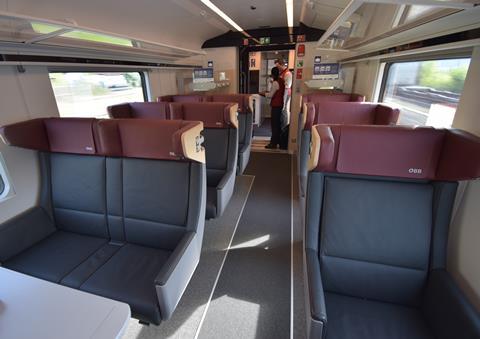
The nine-car Railjet NG trainsets can be distinguished by the driving trailers, which are designed to resemble Siemens’ hugely popular Vectron loco cabs. The design change is intentional; it forms part of Siemens’ efforts to ease the acceptance process for new rolling stock by ensuring as much standardisation as possible between loco and driving car. Yet as with the similar Nightjet trainsets also now being supplied to ÖBB by Siemens, the driving trailers have still to be authorised for use, meaning the trains must be loco-hauled in both directions. Type approval for the driving trailers to be used in push-pull mode is expected by the end of next year.
The other key difference is that seven of the nine trailer cars have low-height doorways 640 mm above top of rail; only the two end coaches have high floors 1 250 mm above the rail.
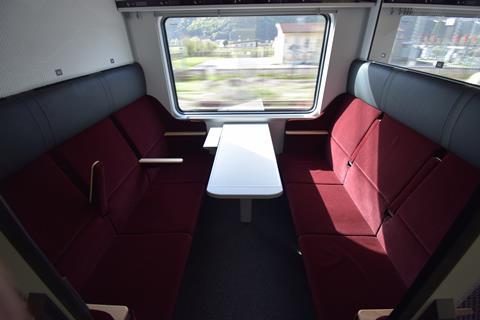
The nine-car trainsets are 238 m long and offer 532 seats in total; 430 in Economy class, 86 in the First and 16 in Business. Each train has two first-class cars with business class sections, an onboard restaurant with seating, four second (economy) class cars, a multifunctional economy class car, and an economy class driving car.
Innovative windows
According to Siemens, the coaches feature a revised bogie design that is 30% lighter that used on the first-generation fleet. This also offers a higher level of ride comfort and reduces noise. The windows have also been the subject of significant innovation — the aim here was to significantly improve mobile signal reception in the saloons.
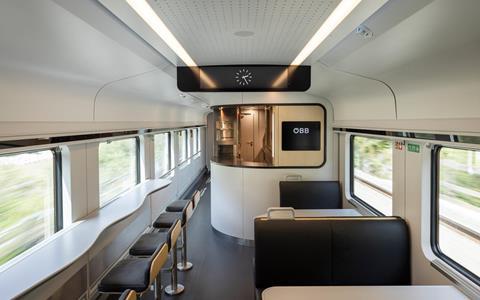
Developed by the manufacturer at its Wien plant, the windows feature an ‘optimally radio permeable’ laser-bonded honeycomb glazing. According to the supplier, this is able to conduct signal power 50 times more effectively than conventional thermally insulated glass, equating to an increase in 4G mobile phone signal quality inside the train of 33%. Also deployed on the RRX EMUs Siemens is supplying for regional services across northwest Germany, the honeycomb layer is significantly cheaper to fit than onboard mobile signal repeaters, the company says.
Other areas of design work have included the use of LED lighting throughout, an air conditioning system operated by a heat pump for both cooling and heating, and fresh air ventilation regulated according to the CO2 level measured inside the train.
The updated paired seat design features folding centre armrests, so pairs of the seats can be converted into a small sofa. Each seat row has three charging options: a USB port, wireless NFC charging, and a 230 V power outlet. Luggage can be stored securely in mini-lockers accessed via NFC or individual numerical codes.

As with most newly developed rolling stock, the Railjet NG formations are equipped with real-time condition monitoring technology able to transmit diagnostic metrics back to the relevant maintenance depot while the trains are in service.
‘A signal for Europe’
During the launch ceremony, ÖBB Chief Executive Andreas Matthä said the updated trains linking Germany, Austria and Italy were an ‘important signal for Europe’. He added that ÖBB has invested a ‘record sum’ of €6·1bn into new trains over the past few years.
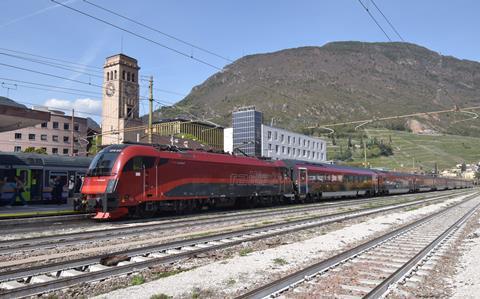
DB’s representative for Bayern Klaus-Dieter Josel also backed the investment in the jointly operated service. ‘Cross-border rail traffic is booming. The number of travellers between Germany and Austria alone has increased by 50% in the past five years. The cooperation between DB and ÖBB is a strong sign of a strong European railway.’

















